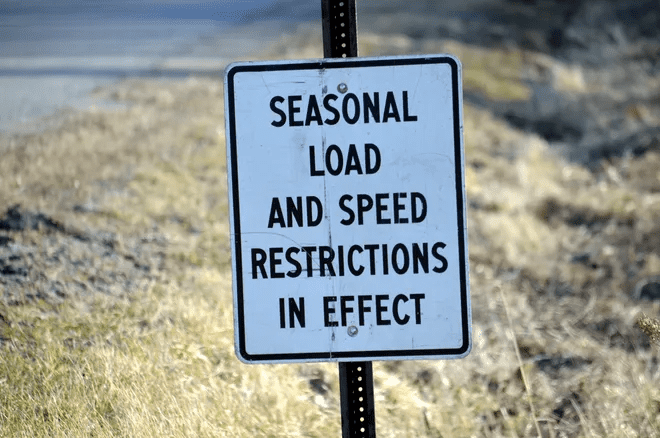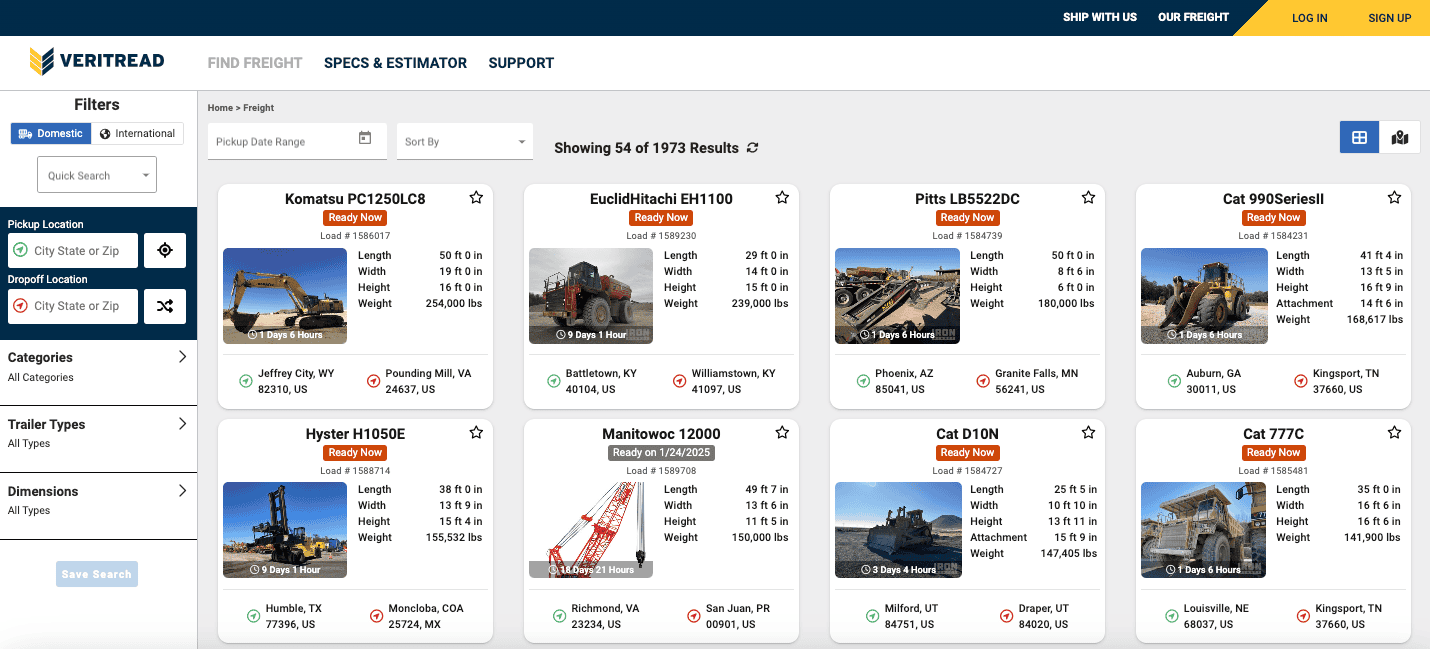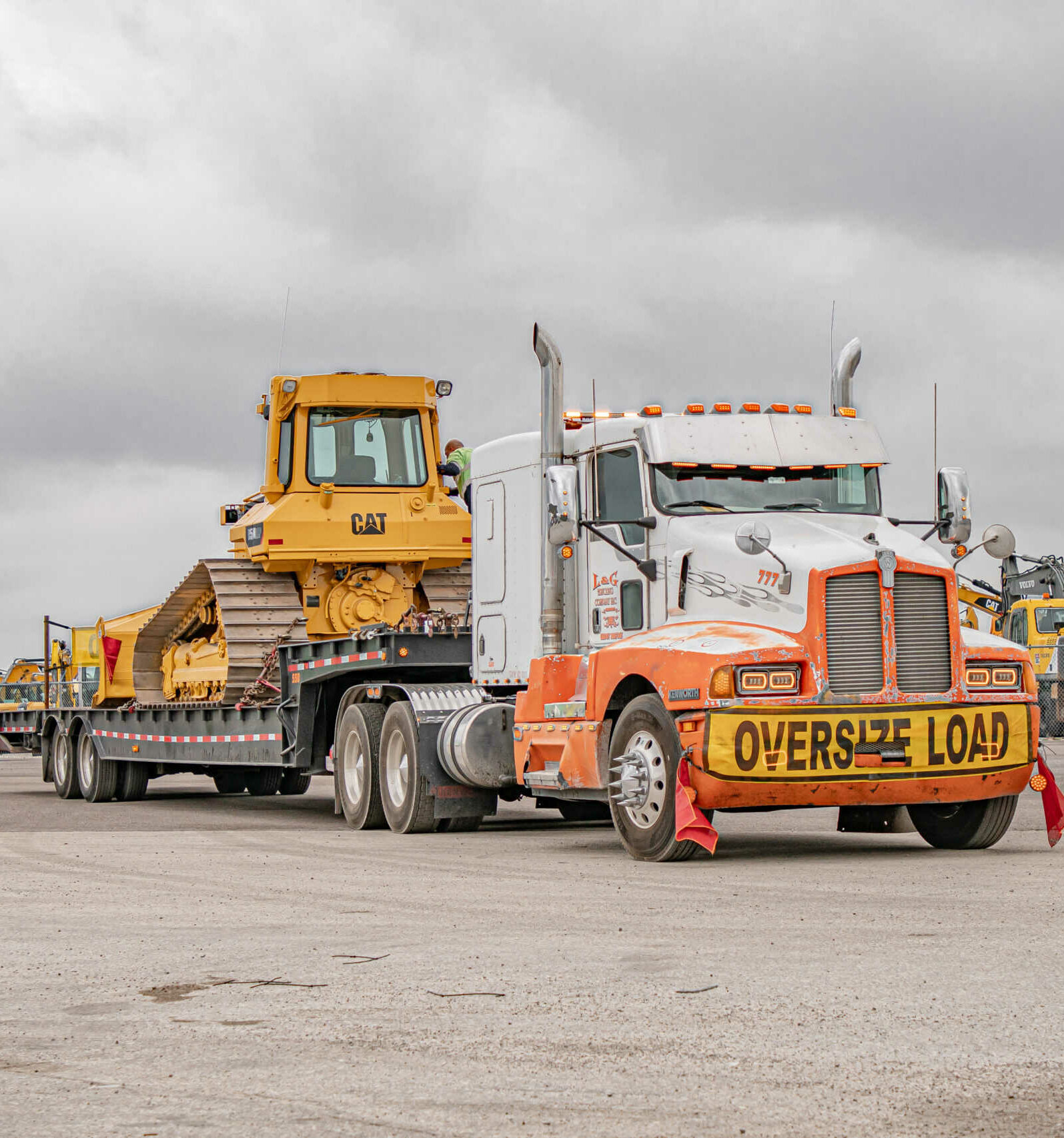Frost law
What Are Frost Laws?

Frost laws, also known as seasonal load restrictions or weight restrictions, are regulations imposed by state and local governments on roads and bridges during the spring thaw. The spring thaw is the period when frozen ground thaws out due to rising temperatures. During this time, the ground becomes more soft and unstable than what it normally is, and heavy vehicles can cause significant damage to roads and bridges, leading to costly repairs. Frost laws typically restrict the weight of commercial vehicles that can operate on roads and bridges, with the restrictions being in place until the ground has sufficiently thawed and hardened. The restrictions can vary depending on the state and the type of road, but they generally limit the weight of vehicles to 5–10 tons per axle. You will see these laws are in effect mostly from March 1st through the middle of June, but this can depend on the year as it goes by what the temperature was during the months of winter.
Why do Frost Laws Exist?

The primary reason for frost laws is to protect roads and bridges from damage caused by heavy vehicles during the spring thaw. When the ground is frozen, it can support heavy loads without sustaining damage. However, as the ground thaws, it becomes softer, and heavy vehicles can cause the ground to shift and sink, leading to cracks and potholes in the road surface. The damage caused by heavy vehicles during the spring thaw can be costly to repair and can also result in safety hazards for drivers. Frost laws help to minimize the risk of damage to roads and bridges and ensure that they remain safe for all drivers to use.
In addition to protecting roads from damage, frost laws are also designed to protect the environment. When heavy vehicles drive over soft ground, they can cause soil erosion and other types of damage to the surrounding ecosystem. This can lead to increased runoff, which can carry pollutants into nearby streams and rivers.
Difficulties with Frost Law
One of the challenges of enforcing frost laws is that they can be difficult to communicate to drivers. In some cases, drivers may not be aware that frost laws are in place, or they may not understand the specific regulations that apply. To address this issue, many states and local governments have developed outreach programs to educate drivers about frost laws and the importance of complying with them.
Another challenge is that frost laws can create logistical challenges for businesses that rely on heavy vehicles to transport goods. When frost laws are in place, businesses may need to adjust their schedules or routes to comply with the regulations. This can result in increased costs and delays, which can be difficult for small businesses to absorb.
Despite these challenges, frost laws are an important tool for protecting roads and the environment during the spring thaw period. By regulating the use of heavy vehicles, frost laws help to prevent damage to roads and reduce the risk of accidents. They also help to protect the surrounding ecosystem by reducing soil erosion and other types of damage.
Frost Law by State
There are several US states that have these restrictions and each state has its own specific frost laws. For example, during the months of March, April, and May in Michigan there is a 35% reduced legal axle weight for vehicles. Some states also require heavy vehicles to drive at a max speed of 35 miles per hour, regardless of what the actual posted speed limit is. Laws are more prevalent in Canada, with nearly all territories and provinces observing seasonal weight restrictions. Be sure to check the states below as each have different requirements, some regionally within the state and can change daily.
United States:
| Idaho | Minnesota | New York | Vermont |
| Iowa | Montana | North Dakota | Washington |
| Maine | Nevada | Pennsylvania | Wisconsin |
| Michigan | New Hampshire | South Dakota | Wyoming |
Canada:
| Alberta | Manitoba | Nova Scotia | Prince Edward Island | Saskatchewan |
| British Columbia | New Brunswick | Ontario | Quebec | Yukon Territory |
Always check the state’s website or the appropriate department of transportation for the latest information before your trip. Visit USDOT 511 Travel Information or Canada Travel Information today.

veritread products
Top Articles
Freight Types
recent posts

Basic Tips of Heavy Equipment Transport

Understanding Equipment Transport Services



